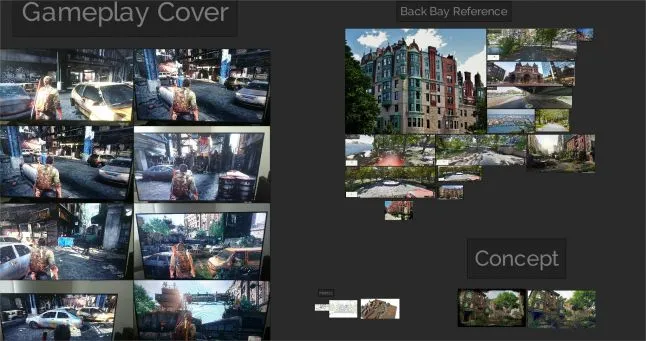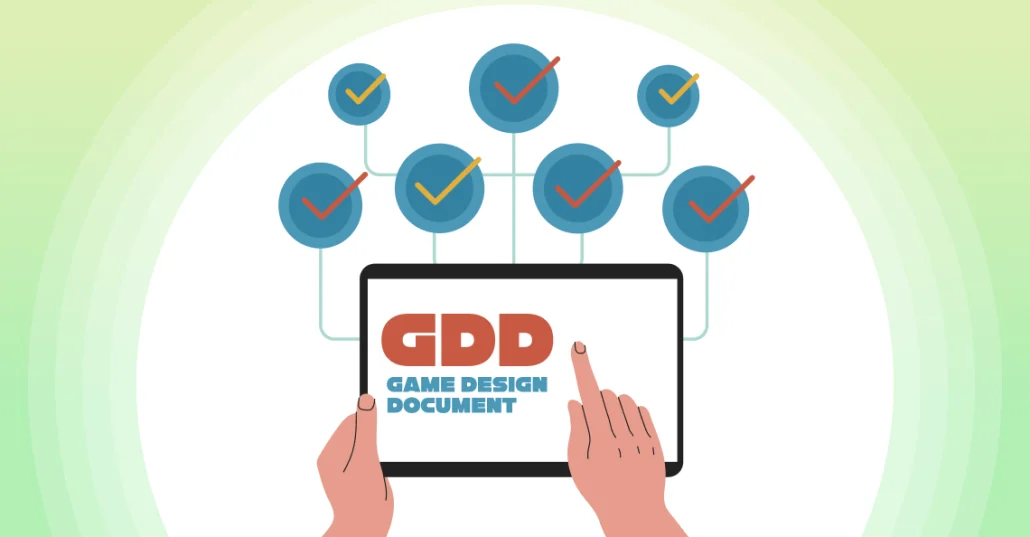A Game Design Document (GDD) serves as the blueprint for game development, providing a comprehensive outline of a game’s concept, mechanics, and overall vision. This essential document is the bridge between a creative idea and a fully realized gaming experience. In this exploration of GDDs, we’ll delve into what they are, what should be included, who writes and reads them, their significance in game development, and when they are necessary. We’ll also examine real-life GDD examples to gain insights into how this critical document shapes the gaming world.
What is a Game Design Document (GDD)?
A Game Design Document (GDD) is a comprehensive and structured document that outlines the concept, design, and development details of a video game. It serves as a crucial reference for all team members involved in the game’s creation, providing a unified vision and roadmap for the project. The GDD encompasses various aspects of the game, including its story, gameplay mechanics, characters, levels, art, audio, and more. It acts as a central repository of information, fostering collaboration, understanding, and consistency throughout the game development stages.
What to Include in a Basic Game Design Document
- Game Concept: The GDD should begin with a concise overview of the game’s core concept, its genre, and the main idea behind it.
- Gameplay Mechanics: Describe the game’s fundamental game mechanics, including player controls, objectives, challenges, and progression.
- Story and Narrative: Outline the game’s story, characters, setting, and any branching narratives or cutscenes.
- Characters: Introduce the game’s characters, including their backgrounds, roles, and relationships within the story.
- Levels and Environments: Detail the different game levels or environments, specifying their design, challenges, and any interactive elements.
- Art and Visual Style: Provide information on the game’s art direction, visual style, and concept art.
- Audio and Music: Describe the game’s audio elements, such as sound effects, music, and voiceovers.
- User Interface (UI): Explain the design and layout of the game’s user interface, including menus, HUD elements, and interactive components.
- Game Progression: Define how the player’s journey unfolds, including level progression, difficulty curves, and in-game rewards.
- Technical Specifications: Include technical details, such as the game engine and platforms the game will be developed for.
- Monetization Strategies (if applicable): If the game involves monetization, detail the approach, such as in-app purchases or ad placements.
- Marketing and Promotion (if applicable): Describe any marketing strategies, target audience, and promotional efforts.
How To Write a Game Design Document?
Writing a GDD requires a structured approach:
- Start with a Game Concept: Begin with a clear and concise description of the game concept, highlighting its unique selling points.
- Outline Gameplay Mechanics: Detail the core gameplay mechanics, explaining how the game will be played and enjoyed.
- Develop the Story: If the game has a narrative, build a compelling story and create profiles for key characters.
- Design Levels and Environments: Plan the game’s levels or environments, considering their layouts, puzzles, and challenges.
- Define Art and Audio: Describe the art style, character designs, environments, and audio elements that will be used.
- Consider User Interface: Design the game’s user interface, ensuring it’s user-friendly and aesthetically pleasing.
- Map Out Game Progression: Create a roadmap for how players will progress through the game, including difficulty scaling and reward systems.
- Document Technical Details: Include specifics about the game engine, platform compatibility, and any necessary technical considerations.
- Monetization and Marketing (if applicable): If monetization and marketing are relevant, explain your strategies.
- Regular Updates: Keep the GDD up-to-date as the project progresses, reflecting any changes, new ideas, or improvements.
Writing a GDD is a collaborative effort, and it should involve input from game designers, artists, programmers, writers, and other relevant team members. The document should be well-organized, easy to understand, and regularly referenced throughout the game development process.


Who Writes the GDD?
The Game Design Document (GDD) is typically authored by a team of game developers, with the primary responsibility often falling on the lead game designer or project manager. It is a collaborative effort, as it requires input and insights from various team members, including artists, programmers, writers, and producers.
Who Reads the GDD?
The GDD is intended to be read by members of the development team and key stakeholders involved in the game’s creation. This includes designers, artists, programmers, producers, and sometimes even marketing and publishing teams. The GDD serves as a reference document that guides the entire development process, ensuring a shared vision for the game.
Why Is a Game Design Document Important?
The Game Design Document is of paramount importance in game development for several reasons. It serves as a comprehensive roadmap for the game, ensuring that everyone on the development team understands the game’s concept, mechanics, and overall vision. The GDD acts as a communication tool, aligning the team’s efforts and minimizing misunderstandings.
It helps in project management, enabling teams to set goals, track progress, and manage resources efficiently. Additionally, the GDD can be crucial when seeking funding or publisher support, as it provides a clear and detailed overview of the game’s potential, making it an essential part of the game development process.
Does Every Game Need a Game Design Document?
While a Game Design Document (GDD) is a valuable tool for most game development projects, not every game necessarily needs one. The necessity of a GDD can vary depending on the scope and complexity of the game, the size of the development team, and the development process itself. Smaller indie games or hobbyist projects might not require a formal GDD, as their teams can maintain a shared vision through informal communication. However, for larger and more complex games, as well as projects involving multiple team members or external stakeholders, a GDD becomes increasingly important to ensure alignment, communication, and project management.
Real-Life GDD Examples
Real-life GDD examples are valuable resources for game developers and enthusiasts, as they offer insights into the structure, content, and organization of a GDD. Studying these examples can help individuals understand how industry professionals document their game ideas, mechanics, and development plans. Real-life GDDs provide a practical reference point for aspiring game designers and can showcase the level of detail required to communicate a game concept to a development team effectively. While specific examples may be proprietary and not widely accessible, some game development communities and websites share templates and excerpts from GDDs that offer valuable educational content. One of them is Deus Ex’s GDD.


However, a watered-down, summarized GDD should look something like this:
Game Title: “Mystic Quest”
Genre: Action-Adventure
Target Platform: PC, PlayStation 5, Xbox Series X
Overview:
“Mystic Quest” is an action-adventure game set in a mystical, open-world environment. Players take on the role of an ancient warrior who embarks on a quest to save their homeland from a dark sorcerer. The game combines intense combat, exploration, and puzzle-solving in a rich fantasy setting.
Gameplay Mechanics:
- Combat: The game features real-time combat with a variety of weapons and magical abilities. Players can engage in fast-paced battles with enemies ranging from creatures to formidable bosses.
- Exploration: The open-world environment encourages exploration. Players can roam vast landscapes, discover hidden caves, and interact with NPCs to uncover lore and quests.
- Puzzles: In various dungeons and locations, players encounter puzzles that require logic and wit to solve. Solving puzzles may unlock new areas and rewards.
Characters:
- Protagonist: Name – Arion, a skilled warrior with a mysterious past.
- Antagonist: Name – Malador, a powerful sorcerer seeking to plunge the world into darkness.
Story:
The game’s narrative follows Arion’s journey to collect ancient artifacts that can stop Malador’s dark ritual. Along the way, Arion forms alliances with unique characters, unravels the history of the world, and ultimately confronts Malador in a climactic battle.
Art Style:
“Mystic Quest” features a visually stunning world with high-quality 3D character models and environments. The art style is inspired by classic fantasy literature and mythology.
Sound and Music:
The game’s soundtrack is composed by [Composer’s Name], aiming to create an immersive experience with a mix of epic orchestral and atmospheric pieces.
Development Team:
- Game Designer: [Designer’s Name]
- Lead Programmer: [Programmer’s Name]
- Lead Artist: [Artist’s Name]
Development Timeline:
- Pre-production: 3 months
- Production: 12 months
- Testing and QA: 3 months
- Release: Estimated in Q4 20XX
Monetization Strategy:
The game will follow a traditional pay-to-play model, with optional cosmetic microtransactions for character customization.
Marketing and Promotion:
The marketing plan includes teaser trailers, social media campaigns, participation in gaming conventions, and collaboration with influencers.
Conclusion:
“Mystic Quest” aims to deliver an engaging action-adventure experience with a captivating story, intricate puzzles, and intense combat. The GDD serves as the blueprint to guide the development team in creating a compelling and immersive game.
Conclusion
In conclusion, the Game Design Document (GDD) plays a crucial role in the game development process. It serves as a blueprint that guides the entire development team, aligns efforts, and ensures a shared vision for the game. While the necessity of a GDD can vary based on project size and complexity, it remains an essential tool for larger, more intricate games and projects involving multiple team members or external stakeholders.
Real-life GDD examples are valuable resources for those interested in game design, offering practical insights into how professionals document their game concepts and development plans. Whether it’s a formal GDD or a more informal document, having a clear and comprehensive game design guide is a key factor in the success of a game development project.


